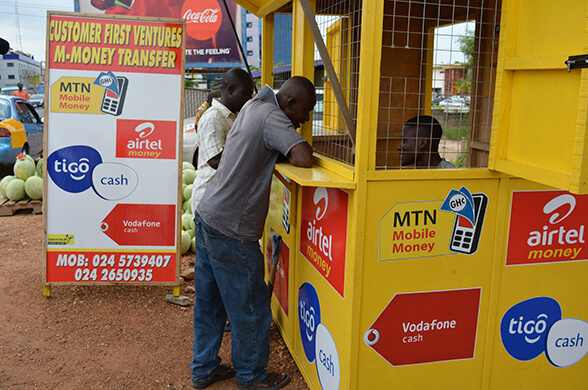The Institute of Statistics, Social, and Economic Research (ISSER) has expressed concern that the recent restrictions imposed on mobile money (MoMo) transactions could impede the digitization efforts of micro, small, and medium-sized enterprises (MSMEs), hindering progress in achieving a cash-lite economy.
ISSER, in a press statement, acknowledged that the proposed rate adjustments would likely have a minimal impact on small-value transactions. However, the institute highlighted that the move could disproportionately affect micro, small, and medium enterprises that heavily rely on mobile money for their financial transactions.
Of particular concern is the potential adverse impact on micro and small enterprises, such as traders and farmers within the agricultural value chains, concentrated in rural areas. The statement underscores the need for careful consideration of the broader economic implications and potential setbacks in the pursuit of a digitized and cash-lite economy.
The potential rise in costs associated with mobile money transactions, particularly impacting traders and transporters of foodstuffs relying on MoMo for security in cash transportation, may lead to increased prices for consumers.
This adjustment could act as a catalyst for inflation in both food and non-food sectors. Additionally, the Institute of Statistics, Social, and Economic Research (ISSER) expresses concern that the impact extends beyond MoMo restrictions to affect the social media-driven e-commerce ecosystem, where charges may also be transferred to consumers.
As service providers on various e-commerce platforms pass on the charges, consumers are likely to experience increased prices for goods and services. MoMo agents across Ghana, in a joint statement to the media, announce a temporary measure limiting cash withdrawals to GH¢ 1,000 per transaction starting December 1.
ISSER highlighted that the potential consequences of the mobile money restrictions could be substantial, particularly affecting underserved and remote populations.
“Approximately 76% of mobile money agents are accessible to consumers within a 30-minute radius in rural areas, whereas over 50% of rural residents would need two hours to reach an ATM. Additionally, only about 40% can access a bank or microfinance institution within this time frame,” stated ISSER.
In light of these circumstances, ISSER pointed out that many mobile money users in rural areas, where ATMs, banks, and microfinance institutions are limited, may face the dilemma of either enduring higher transaction costs or reverting to cash transactions.
Source: Ghana360news.com

